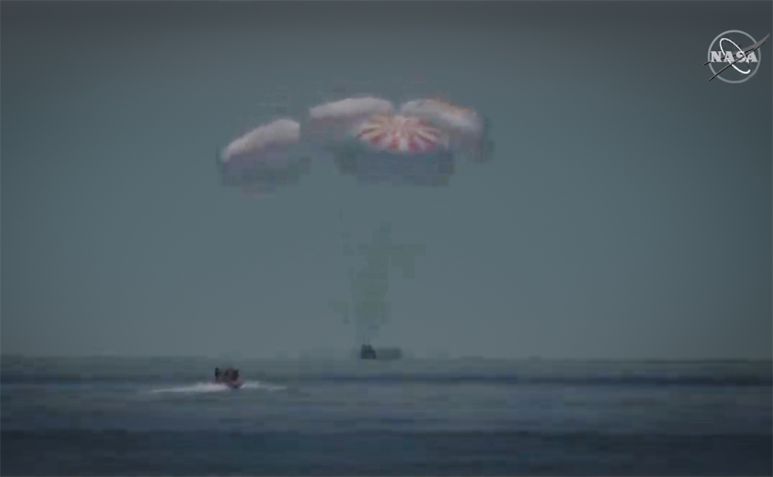After about two months of work aboard the International Space Station, Bob Behnken and Doug Hurley successfully returned to Earth. Meanwhile, two more manned missions are already planned, the operator of which will be SpaceX.
Two months ago, we were excited about the launch of the SpaceX Crew Dragon , with the crew. Now, two brave crewmen will land after about nineteen hours of return flight. The broadcast on the NASA channel began before midnight on Saturday, but probably only the most persistent will allow themselves to follow the entire flight from MSK to Earth. Most of us can spend Sunday calmly, because the most important things will not start until the evening.
Landing of the SpaceX Crew Dragon Demo-2
The SpaceX Crew Dragon capsule left the MSK at 1:34 am on Saturday night. The last hours were the most important part of my return as always. This last leg began around 8:00 PM on Sunday, and around 8:42 PM , the capsule launched off Florida.

The landing was not significantly different from what we have been dealing with for several decades , except for the shuttle stage. However, SpaceX ensures that this is a much safer procedure than before. Nevertheless, the stress on the faces of the air traffic control center employees was visible during the transmission. Fortunately, everything went their way. Below is a demonstration video of the parachute landing system that shows what the previous tests looked like and demonstrates the parachute braking system in detail.
Now there will be official appearances of the head of NASA, a conference with the participation of the crew, but in the long term, more SpaceX missions with astronauts at the MSK are already planned. The one that just took place was the so-called Demo-2, i.e. the second test flight of the Dragon manned vehicle on the MSK. The first mission was unmanned and took place at the end of last year.
For the first time in almost a decade, four people will fly into orbit at once
Subsequent missions will be marked according to the Crew-X nomenclature, where X should be substituted with the mission number. And so the Crew-1 Dragon flight is scheduled for September 20, 2020. It will be a fully-fledged mission with a full crew of four (three Americans and one Japanese).
This means that for the first time since the last flight of the Atlantis shuttle into space, more than 3 people will fly at a time. This is the maximum capacity of the Soyuz TM vehicles, which have so far carried American and other astronauts to the MSK. The same number of people are also housed in the Chinese Shenzou, whose construction is based on the Russian Soyuz.
The return of the Crew-1 Dragon crew is planned for April 2021, which means that if the Crew-2 Dragon launch is successful at the end of March 2021, two manned Dragons will be in orbit for a while. The second, or actually the third, crew provided by the SpaceX vehicle at the MSK will remain in space until August 2021.
Despite SpaceX’s success, NASA will not stop sending Soyuz astronauts
A flight of the manned Boeing CST-100 Starliner is also planned for next year, but for the time being this mission is questionable. It is known, however, that the frequency of flights to the ISS will increase, because the Russians will not stop sending their Soyuz.
These already have two more flights planned, in October this year and in April next. And what may be surprising, the Americans will still fly them. Two cosmonauts and an American astronaut will go on a journey in the Soyuz MS-17. Soyuz MS-18 will once again take two Russians and an American.































Discussion about this post